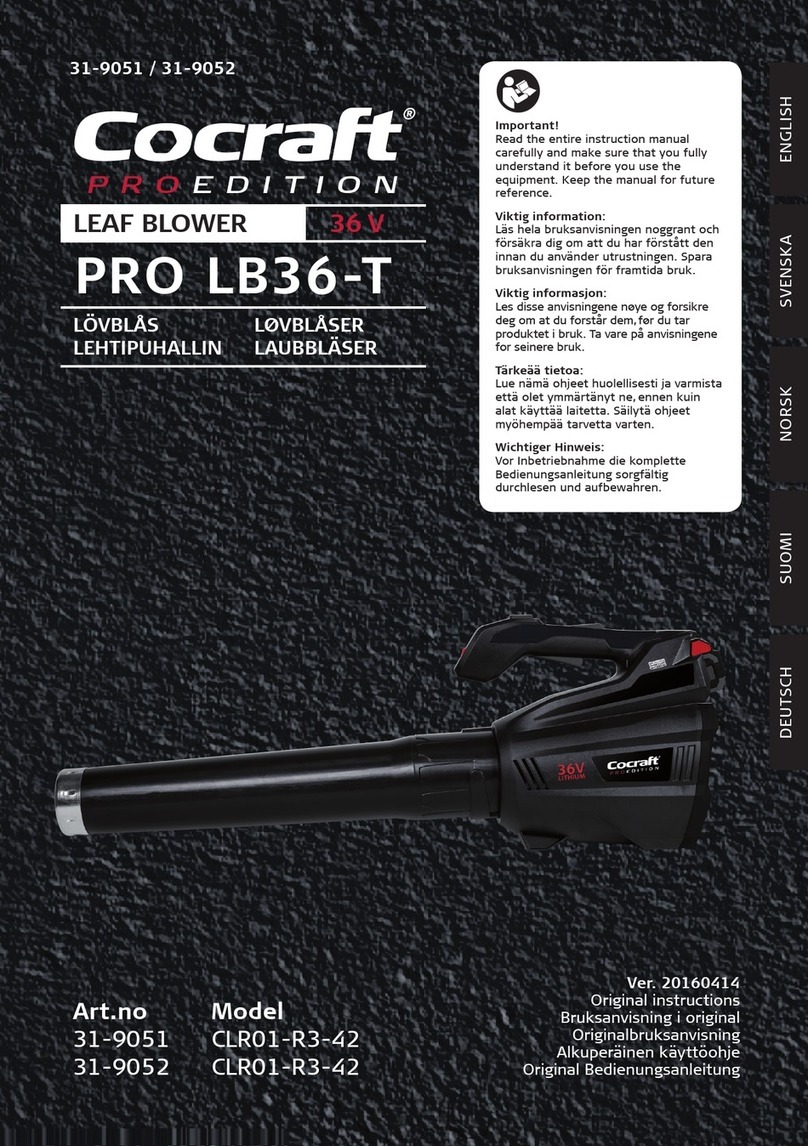
ENGLISH
3
e) When using power tools outdoors, use anextension lead that is suitable for
this purpose. Theuse of anextension lead designed for outdoor use decreases
therisk of electric shocks.
f) If theuse of thepower tool in awet environment is unavoidable, awall
socket equipped with aresidual current device (RCD) should be used.
Theuse of anRCD (with atripping current of 30mA and which trips within 30ms)
significantly reduces therisk of electrocution.
3) Personal safety
a) Pay attention to what you are doing and use common sense when using
power tools. Never use power tools if you are tired or under theinfluence of
drugs, alcohol or medication. One moment of inattention while using apower
tool may result in aserious injury.
b) Wear protective clothing. Always wear safety glasses. Using protective
clothing such as dust masks, non-slip safety shoes, helmets and ear defenders
decreases therisk of injury.
c) Avoid accidental starts. Make sure that thepower switch is set to OFF before
plugging thepower tool into awall socket, fitting thebattery or picking up/
carrying thepower tool. Carrying apower tool with your finger on thepower
switch/trigger or connecting thepower tool to awall socket when thepower
switch is set to ON is inviting anaccident.
d) Remove all service tools/keys before switching on thepower tool. Aservice
tool left on arotating part of thepower tool may result in personal injury.
e) Do not overreach. Keep proper footing and balance at all times. This enables
better control of thepower tool in unexpected situations.
f) Wear suitable clothing. Do not wear loose-fitting clothing or jewellery.
Keep hair, clothes and gloves away from moving parts. Loose-fitting clothes,
jewellery or long hair could become caught in moving parts.
g) If equipment for theextraction and collection of dust is available, make sure
it is connected and used properly. Use of dust collection equipment can reduce
dust related hazards.
4) Use and maintenance of the power tool
a) Do not force thepower tool. Use thecorrect power tool for your application.
Thecorrect power tool will do thejob better and safer if used at therate for which
it was designed.
b) Never use thepower tool if thepower switch does not switch thetool on
and off properly. Any power tool that cannot be controlled by thepower switch is
dangerous and must be repaired.
c) Unplug thelead from thewall socket or remove thebattery before making
any adjustments, changing accessories or storing thepower tool. These
precautions reduce therisk of thepower tool starting unexpectedly.
d) Store power tools that are not being used out of children’s reach. Do not
allow people who are unfamiliar with thetool or these instructions to operate
thetool. Power tools are dangerous in thehands of untrained users.





























